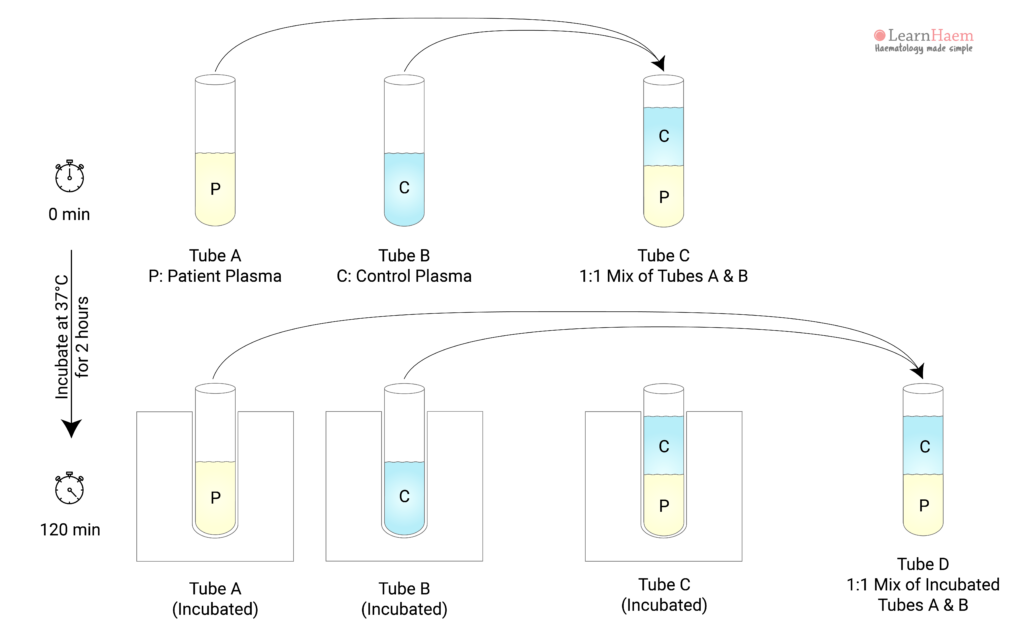The inhibitor screen (also known as the incubated APTT mixing study) is done to look for time-dependent coagulation factor inhibitors. The time-dependent nature of acquired factor VIII inhibitors can be missed on an APTT mixing test because they require time to reduce factor VIII levels. Factor VIII inhibitors are also temperature-dependent, hence the test is done at 37°C.
The test consists of a series of APTTs done on four different samples at different timepoints.
- 0 minutes:
- APTT on patient’s sample (tube A)
- APTT on control plasma (tube B)
- APTT on 1:1 mix of patient and control plasma (tube C)
- 120 minutes:
- APTT on Incubated tube A
- APTT on Incubated tube B
- APTT on Incubated tube C
- APTT on 1:1 mix of incubated tube A and incubated tube B (tube D)
The reason for having incubated tube A, incubated tube B and tube D is to have a reference APTT which accounts for natural coagulation factor decay at 37°C over two hours.
Test Result Interpretation
| Tube | A (0 min) | B (0 min) | C (0 min) | C (120 min) | D |
|---|---|---|---|---|---|
| Normal | Normal | Normal | Normal | Normal | Normal |
| Coagulation factor deficiency | Prolonged | Normal | Normal | Normal | Normal |
| Time-dependent inhibitor | Prolonged | Normal | Normal | Prolonged | Normal |
| Immediate-acting inhibitor | Prolonged | Normal | Prolonged | Prolonged | Prolonged |



Thank you for making this practical session simpler with better understanding for me.
Please, can you help to explain antibody titre, heparin concentration and titration procedure?